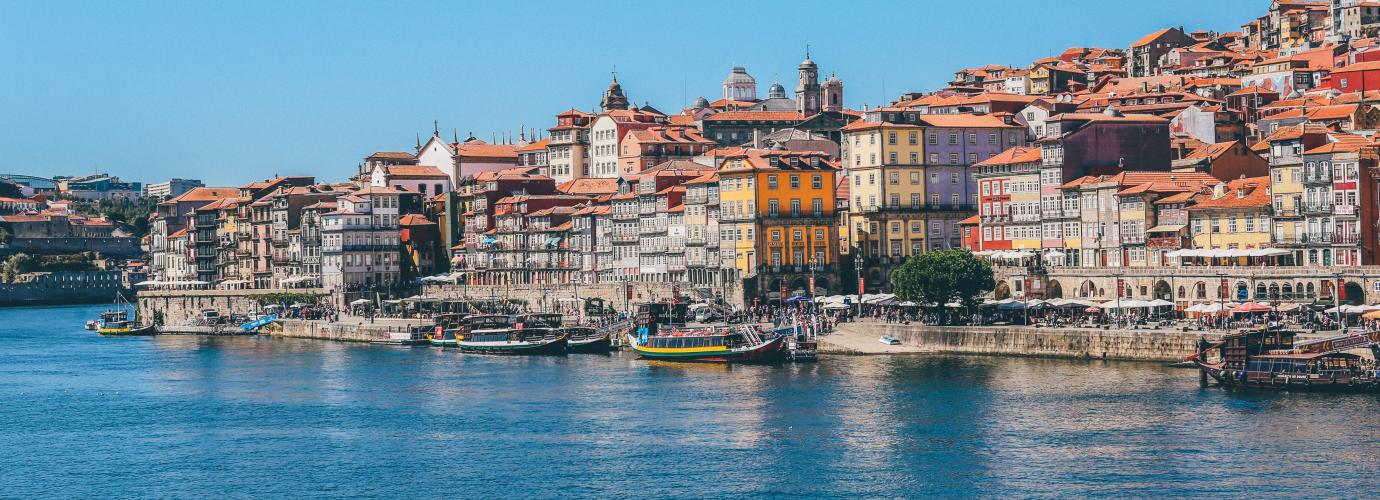Portugal is a democratic republic situated on the westernmost tip of Europe, covering a total area of 92,152 km². It forms part of the Iberian Peninsula, with Spain to the north and east and the Atlantic Ocean to the south and west, where the Portuguese archipelagos of Azores and Madeira are located.
Portuguese is the official language of the country. Others that have also gained official status are Portuguese Sign Language (1997) and Mirandês (1999), the latter spoken in the northeast area of Miranda do Douro (Law No. 7/99, 29 January).
The Portuguese language is spoken by more than 200 million people. Portuguese is the official language of eight countries - Portugal, Angola, Brazil, Cape Verde, Guinea-Bissau, Mozambique, São Tomé and Príncipe and East Timor.
Portugal is a secular state. That said, the Portuguese Republic Constitution states that "the freedom of conscience, religion and form of worship is inviolable" (Art. 41, no. 1) and that "churches and other religious communities are separate from the State and are free to organise themselves and to exercise their functions and form of worship" (Art. 41, no. 4). The predominant religion among the Portuguese people is Roman Catholicism.
The population density of Portugal is around 111.6 inhabitants/km2. However, along the western coastline, mainly between Viana do Castelo and Setúbal, as well as the southern coastline (Algarve), the concentration is higher than the national average. In the metropolitan areas of Lisbon and Porto the numbers are much higher, with figures exceeding 1,000 inhabitants/km2. In the Norte and Centro regions of the country and in Alentejo, in the interior, most areas do not exceed 50 inhabitants/km2, and are generally less attractive areas for the resident population.
Resident population: total, by year and by major age groups (Individual - Proportion - %)
Years Major age groups
Total 0-14 15-64 65 or more
2000 100.0 16.4 67.4 16.2
2005 100.0 15.9 66.8 17.3
2010 100.0 15.2 66.3 18.5
2015 100.0 14.2 65.3 20.5
2020 100.0 13.5 64.2 22.3
2021 100.0 12.7 67.3 20.0
2022 100.0 12.9 63.1 24.0
2023 100.0 12.8 63.1 24.1
Sources: INE. Estatísticas Demográficas: 2024
On December 31st, 2023, the resident population in Portugal was estimated to be 10,639,726 people, 123,105 more than in 2022 (INE) reflected in a growth rate of 1.16 % (0.91 % in 2022), increasing for the fifth year running. Of the resident population, 5,083,568 are men and 5,556,158 are women.
It is estimated that 117,843 permanent immigrants entered Portugal in 2023, 21.3 % more than in 2021 (97,119), and 30,954 permanent emigrants left, 23.4 per cent more than in 2021 (25,079).
The population increase resulted from a net migration rate of 155 701 people (136 144 in 2022), which offset the negative natural balance of -32 596 (- 40 640 in 2022). In 2023, there was a positive migration growth rate of 1.47% (1.30% in 2022) and a negative natural growth rate of -0.31% (-0.39% in 2022).
Annual population rate: total, natural and migratory (thousands of people)
| Years | Total | Rate of natural increase | Net migration rate |
|
1974 |
249,5 | 75,1 | 174,5 |
|
1984 |
40,7 | 45,8 | -5,1 |
|
1994 |
34,3 | 10,0 | 24,3 |
|
2004 |
21,6 | 7,3 | 14,3 |
|
2014 |
-49,0 | -22,5 | -26,5 |
|
2021 |
26,8 | (R)-45,3 | (R)72,1 |
|
2022 |
46,2 | -40,6 | 86,9 |
| 2023 | 123.1 | -32,6 | 155,7 |
Sources: INE, Estatísticas Demográficas: 2024.
In Portugal, unemployment is still low, however, there has been a slight increase over the last year. The group with the highest levels of unemployment continues to be those under the age of 25.
Unemployment rates from 2000 to 2023 by age group (mainland) (thousands of people)
| Year | Total | Under 25 | 25-54 | 55-64 |
| 2000 | 3.9 | 8.6 | 3.5 | 3.2 |
| 2005 | 7.6 | 16.2 | 7.2 | 6.1 |
| 2010 | 10.8 | 22.8 | 10.7 | 8.9 |
| 2015 | 12.4 | 32.0 | 11.2 | 12.4 |
| 2020 | 7.0 | 22.5 | 6.0 | 6.5 |
| 2022 | 6.1 | 19.1 | 5.4 | 5.5 |
| 2023 | 6.5 | 20.3 | 5.6 | 6.1 |
Source: INE/ Pordata. Last update: 2024-02-07

